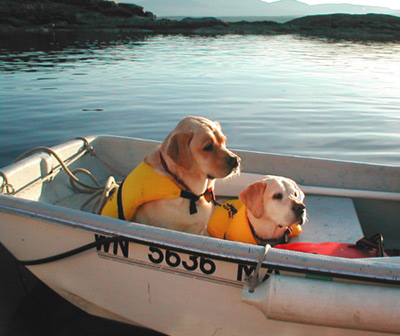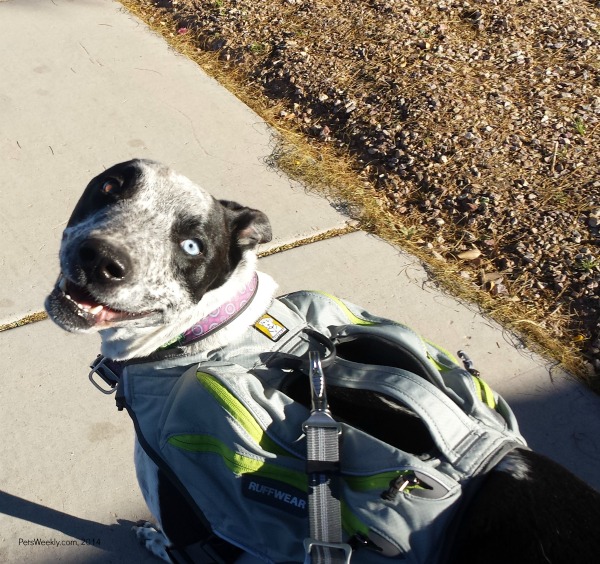Preparing Pets for Hurricane Season
Share

While we don’t have hurricanes here in the Southwest, we do know the inherent dangers associated with storms – particularly for our pets. Disaster can strike at any time, so this is the time we offer some tips on pet safety. Whether it’s a disaster related to wind, fire, water or land – you can never be too prepared.
After Hurricane Katrina, a Zogby poll discovered that 61% of pet owners “would not evacuate if they could not bring their pets with them”. Congress addressed this issue in 2006 by passing the Pets Evacuation and Transportation Standards (PETS) Act.
However, if you think this gives you the right to demand that your pets stay in a shelter or hotel with you, read the text of the PETS act. Because, it doesn’t – not by a long shot.
The PETS Act of 2006
The PETS Act authorizes FEMA to provide rescue, care, shelter, and essential needs for individuals with household pets and service animals, and to the household pets and animals themselves following a major disaster or emergency.
However, it does not REQUIRE them to provide these services.
This is why it is crucial that all pet owners research their community’s existing human and pet evacuation plans and contact local government agencies if plans aren’t publicly available. Most importantly, it means you need to have your own plan to save yourself and your pets.
If you live in an area that is prone to hurricanes, tornadoes, wildfire, tsunamis, volcanoes, earthquakes, or flooding, then you need a plan.
We’ve got detailed information on how to create, train and implement a plan, but it’s up to you to follow through with your plan. These should be your priorities:
- Decide whether you should evacuate or shelter in place with pets.
- Create a bug out bag for you and your pets.
- Understand your rights in an emergency.
- Create a plan for family, pets, and livestock.
Evacuating with Pets
- When you are told to evacuate, EVACUATE! Risks include losing your lives as well as losing future assistance when conditions worsen.
- Take all of your pets. This includes horses, ferrets, birds, tarantulas as well as your dogs and cats. A pet includes any animal you feed and house.
- Make sure each individual crate/carrier is large enough for the pet to stand up and lie down comfortably.
- Grab the following:
- Bug-out Bag
- Map of area
- List of shelters that accept animals

Each dog, cat, critter, reptile, bird or other pet should have:
Depending on the situation, you should create a free google drive account and upload all of your documents and photos to one folder that you can access via your phone so you don’t have to carry around a 3-ring binder.
Your uploaded/printed paperwork should include:
- Vaccinations tags and copies of paperwork
- Microchip numbers (make sure data is updated)
- Veterinary records and copies of prescriptions
- Proof of ownership (registration papers, etc.)
- Coggins Test (for horses)
- Recent photos of your pets, and at least one with you in them

Your Pets “Bug-Out-Bag” should include:
- A crate
- 3 – 5 day supply of:
- Water
- Food
- Medication
- Records:
- A laminated copy of your pets ID and vaccination records
- A laminated photo of your pets (front, side, rear view)
- Extra collar & leash and harness
- Basket muzzle (these are required for most dogs in public shelters or on transportation)
- Collapsible food bowl and water bowl
- Extra blanket
- Cleaning items (Durable wipes, etc).
- Optional items that will help your pets:
- Extra toys
- Picture of pet with your name & contact information (attach a copy to your crate)
- Natural calming supplements/pheromones
- Basic first aid kit
- Small garbage bags
- Disposable litter tray or Collapsible litter tray and extra litter in sealed container (for cats)
Natural disasters rarely give us much notice to prepare, which is why it’s so important to have a plan. If you have pets, it’s doubly important. If you live in an area that is prone to hurricanes, tornados, wildfire, tsunamis, volcanoes or earthquake, or flooding, then it’s time to create your pet’s Bug Out Bag and a family plan in case you’re away from your home.
Creating a Family Plan
- Download this easy-to-create Family Emergency Plan from FEMA or this family plan from the Red Cross.
- Identify your evacuation route and alternate plan: E.g., we evacuate in anything over Cat-2, but shelter in place when it is under under a cat-1.
- Choose a place where you will meet in case of emergency
- Identify who is in charge of picking up the pets and transporting
- Create an overall plan: Pet-friendly hotel, shelter, personal shelter
- List two ways you will communicate with your family in the event of emergency
- Identify neighbors you can rely on to remove your pets to safe zones if you’re unable to return home.
Evacuating with Livestock
For information on evacuating livestock in a disaster, please refer to this free worksheet on the steps to take from the HSUS.











